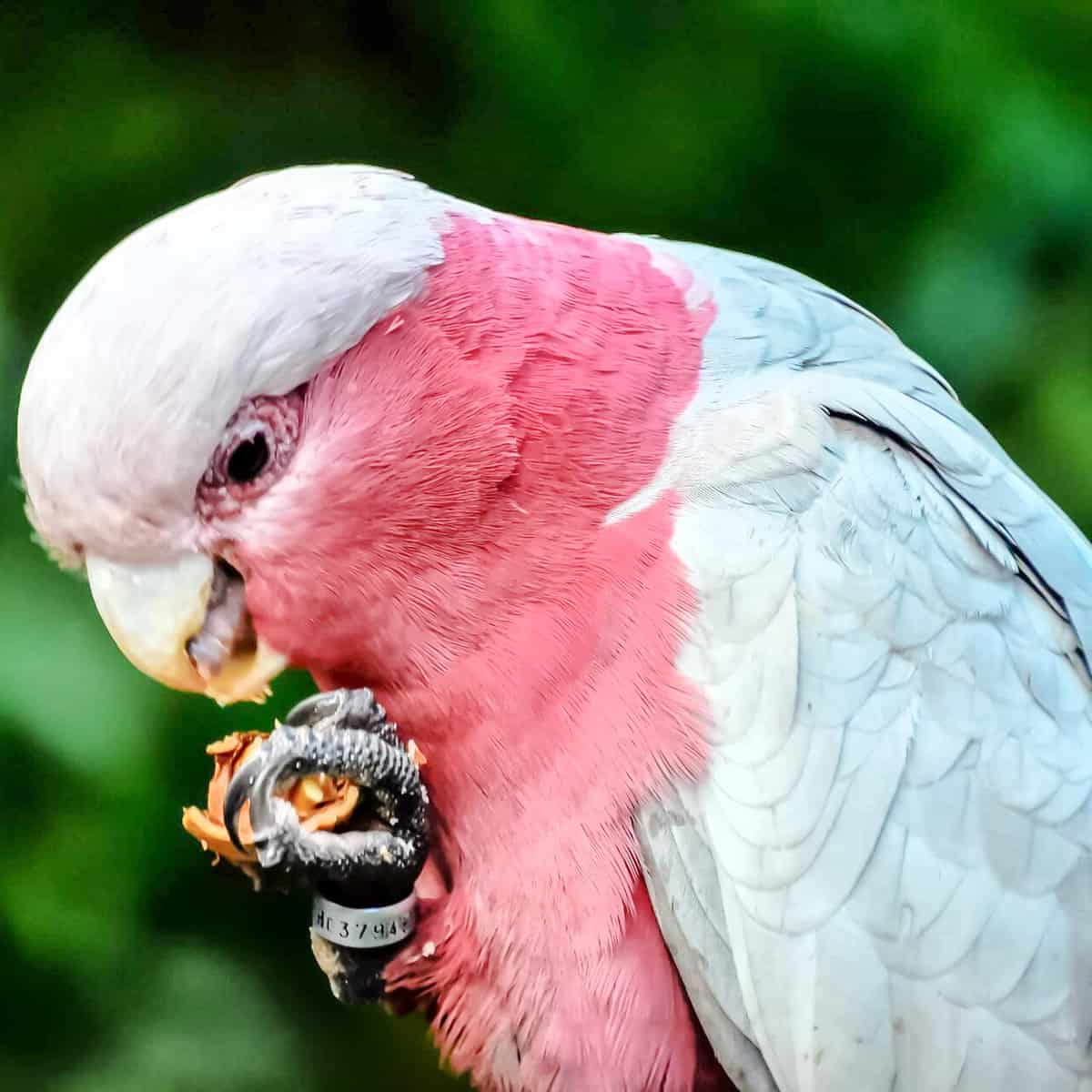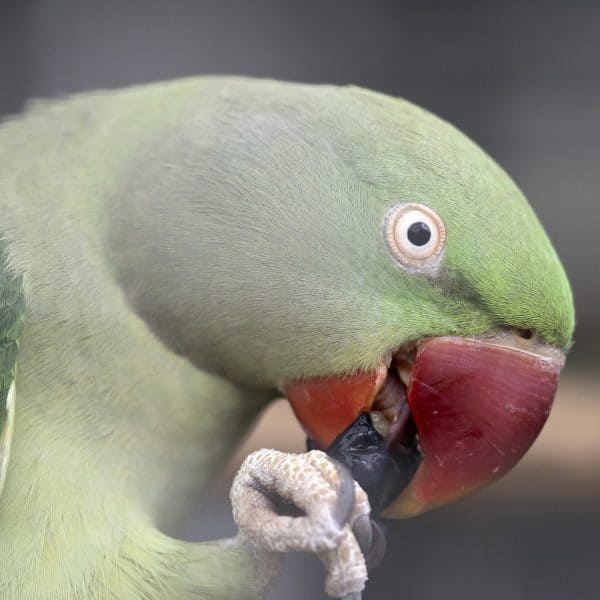
What Are the Basic Needs of a Pet Bird?
Last Updated on by Catherine Tobsing
Firstly the question needs to be asked, “What kind of pet bird?”
The basic needs of pet birds are determined by their individual species and include the following essential requirements as outlined in the provided sources:
- **Proper Nutrition:** Pet birds require a well-balanced diet that typically includes high-quality bird pellets, fresh fruits and vegetables, nuts, seeds (in limited quantities), and always clean fresh water.
I would interchange “well-rounded” nutrition with “proper nutrition” while stating that there is no “end-all exact recipe” that satisfies all pet bird’s needs.
There is no “percent of this” and “exactly a percent of that.”
If you haven’t observed, birds are not the most precise eaters.
Emily Post had no parrots and you’re really old if you know who she was.
Determine the right amount of food to keep in your adult bird’s dishes.
Keeping them filled to the brim and birds may become choosy, “tossing” what they feel is not worthy of their beak.
Just fill about 1 inch from the bottom of the feeder dish, you can always add more.
BTW too much food can indicate to your hen that it’s a good time to breed with an abundance of stuff to eat ‘n all.
We feed our 3 boys Higgins Safflower Gold. Parrot size for the Ringneck and Quaker, and Conure size for the Cockatiel
We like the safflower-based mix that also includes Higgins Intune Pellets. The Parrot size mix may have a few large nuts in shell that are too big for the two small parrots, but they eat up most of the rest of it. The Conure sized mix has the smaller seeds that our cockatiel likes.
All the birds (we additionally have 6 budgies) get Lafebers Avi-Era vitamins dissolved in their everyday drinking water.
All 9 birds are flighted and get a modicum of exercise daily.
- **Social Interaction and Enrichment:** Birds are highly social animals that thrive on interaction with their human companions.
Daily interaction, providing toys and activities for mental stimulation, and allowing out-of-cage time in a safe environment is crucial for their well-being.
Let’s start with the “safe environment” thing.
I look at that 2 ways:
- Is the home’s environment safe i.e. no mirrors to fly into, sinks full of water, open toilet seat? We talk about that in a bit.
- Are there any escape routes that present themselves that say when an entry door opens?
Toys can be a slippery slope.
Where most get it wrong is not understanding the materials and or colors your bird warms up to.
The budgies chew anything wood. They love their swings and occasionally walk through the plastic Slinky hanging from their birdcage roof.
Keto the ringneck loves his plastic balls.
Chili the Quaker plays with string, plastic spoons and alternately “S” hooks all day long.
Barney begrudgingly snarls at fringes of cotton rope now and then.
- **Grooming and Health Care:** Regular grooming is essential for birds, including nail and beak trimming (depending on the species), feather care, and scheduling regular check-ups with an avian veterinarian to monitor their health.
Aside from regular veterinary checkups, the three healthiest activities are exercise, bathing, and weighing the bird.
Bathing can be anything from a light mist with a spray bottle to an immersive shower or sink bath.
Birds are the master of disguise when it comes to illness.
This is a defense mechanism so the bird doesn’t appear weak to a predator.
The simplest way to track a pet bird’s health is to weigh it on a regular basis.
Any weight “swings” in either direction may indicate your bird is sick.
- **Creating a Safe Environment:** Bird-proofing your home is vital to ensure your pet’s safety.
This includes avoiding toxic substances, supervising interactions with other pets and household objects, and controlling temperature to protect them from extreme changes.
- **Housing and Cage Requirements:** Providing a suitable living space is crucial. This involves choosing a cage that allows the bird to move freely, ensuring appropriate bar spacing, placing the cage in a well-lit area away from hazards, and furnishing it with perches, toys, and feeding dishes.
Dome top cages are more appropriate for long-tail birds.
Flat-top and play-top birdcages will work for short-tail birds.
The size of a cage is commensurate with how much time the bird spends time in and out of it.
If you’re gone 12 hours a day and your bird is locked up the whole time a larger cage is appropriate whereas if the bird does nothing more than sleep in its cage you can get by with a smaller one.
By meeting these basic needs – nutrition, social interaction, grooming and health care, creating a safe environment, and providing appropriate housing – you can ensure the well-being and happiness of your pet bird.
Written by Mitch Rezman and the Windy City Parrot Content Team.
Author Profile
Latest entries
 The Traveling BirdJune 26, 2025Can You Name 5 Parrot Species That Are Living Wild in the USA?
The Traveling BirdJune 26, 2025Can You Name 5 Parrot Species That Are Living Wild in the USA? Bird BehaviorJune 26, 2025How is it Parrots Are Problem Solvers Social Animals and Even Use Tools?
Bird BehaviorJune 26, 2025How is it Parrots Are Problem Solvers Social Animals and Even Use Tools? Bird & Parrot AnatomyJune 25, 2025How a Tiny Chemical Modification Makes Parrots Nature’s Living Paintings
Bird & Parrot AnatomyJune 25, 2025How a Tiny Chemical Modification Makes Parrots Nature’s Living Paintings PigeonsJune 20, 2025How Do Parrots Thrive in Cities Outside Their Native Habitats?
PigeonsJune 20, 2025How Do Parrots Thrive in Cities Outside Their Native Habitats?



